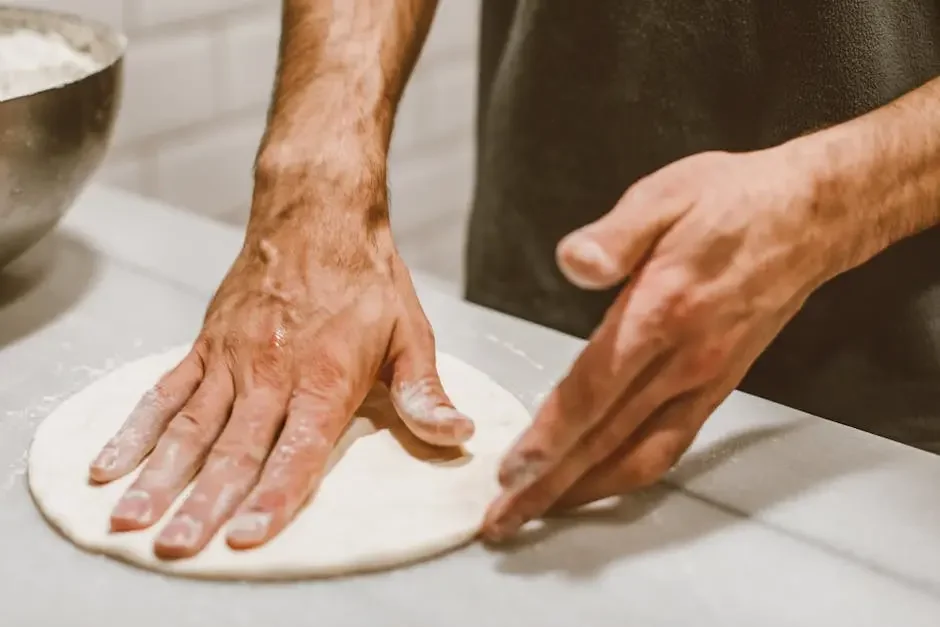Discover the Secrets to Perfect Artisan Pizzas
There's nothing quite like the taste of a well-made artisan pizza. With its crispy crust, fresh toppings, and unique flavors, it's no wonder these handcrafted delicacies have captured the hearts of food lovers everywhere. If you've ever been curious about how to create the perfect artisan pizza at home, you're in the right place. In this guide, we'll uncover the secrets and tips you'll need to bring this culinary masterpiece to life in your kitchen.
Understanding the Essentials of Artisan Pizzas
Before you roll up your sleeves, it's important to understand what makes artisan pizzas special. Artisan pizzas are known for their emphasis on high-quality, often locally-sourced ingredients, and a focus on craftsmanship. From the dough to the toppings, each component plays a crucial role in the pizza's overall flavor and texture.
The art of artisan pizza lies in the subtle balance of flavors and textures. Not just any tomato sauce or cheese can make the cut. It is the mastery of these elements that translates a simple dish into a culinary delight. Artisan pizzas typically offer a wide range of styles, avoiding the overload of toppings common in conventional pizzas. The magic is in the simplicity, where each carefully selected ingredient stands out to create a union of taste and aroma. This approach not only highlights the quality of ingredients but also pays homage to traditional pizza-making techniques.
Choosing the Right Ingredients
One of the secrets to a great artisan pizza is starting with fresh, quality ingredients. Opt for unbleached, high-gluten flour for your dough and fresh, ripe tomatoes, authentic cheeses, and a selection of toppings that complement each other. Remember, simplicity often leads to the most delicious results.
Selecting ingredients is more than just a step in the process—it's the essence of an artisan pizza. Fresh produce like heirloom tomatoes and basil can elevate your pizza to new heights. When it comes to cheese, choices like buffalo mozzarella or creamy burrata can add a luxurious touch. Likewise, local or imported cured meats, such as speck or coppa, can bring a surprising depth of flavor. Exploring your local markets for unique finds often uncovers ingredients that become the stars of your artisan creation.
In the quest for the perfect artisan pizza, you might also consider the story behind each ingredient. Many traditional pizza makers emphasize the use of organic products and sustainable farming practices. This not only enhances the flavor profiles but also contributes to a more environmentally friendly meal. The narrative of your pizza is enriched when it features responsibly sourced ingredients that tell a story beyond the plate.
Mastering the Dough: Techniques and Tips
The dough is the foundation of any good pizza. To achieve a perfect dough, start by learning the basics of kneading and fermentation. Patience is key, as allowing the dough to ferment properly can enhance its flavor and texture. Additionally, explore various shaping techniques to get that desired thin, crispy crust.
A critical aspect of dough making is understanding how different flours can impact your pizza's outcome. Using a high-gluten flour can give your dough the necessary structure, while incorporating some whole wheat flour can add a touch of rusticity to your crust. Experiment with hydration levels—slightly wetter dough often results in a chewier, more flavorful crust. Remember, shaping the dough is as much about practice as it is about technique, and achieving the right balance is part of the rewarding challenge of pizza making.
For those looking to push boundaries, experimenting with sourdough starters can add a layer of complexity to the dough’s flavor. Sourdough fermentation allows the natural wild yeasts to develop, leading to a crust that is both more aromatic and digestible. It's a traditional practice that requires time and care, but the results can be extraordinary, offering a nuanced taste that complements the artisanal approach of pizza crafting.
Perfecting the Baking Process
Baking your pizza at the right temperature is crucial for achieving that crispy crust and bubbly cheese. Preheat your oven to its highest setting, and consider using a pizza stone or steel for even heat distribution. Keep an eye on your pizza as it bakes to ensure it doesn't overcook, and make adjustments as needed.
The baking surface, whether it's a stone or steel, plays a vital role in pizza making by facilitating the high temperatures needed for a proper crust. By absorbing and retaining heat, these tools help in achieving that ideal balance of crisp edges and a chewy center. Understanding your oven's nuances can also contribute to your pizza-making success. Rotating the pizza mid-bake or adjusting rack levels might be necessary tweaks to perfect the output in your specific setup.
Exploring alternative baking methods, such as using an outdoor pizza oven, can further elevate your culinary prowess. These ovens typically reach higher temperatures than conventional ones, allowing for a more authentic Neapolitan-style pizza with charred spots that add a delightful flavor dimension. Even without specialized equipment, implementing techniques like double baking—where the crust is pre-baked for a few minutes before toppings are added—can result in a consistently crispier pizza.
Exploring Flavor Combinations and Toppings
Once you've mastered the basics, it's time to have fun with toppings. Whether you prefer classic margherita or something more adventurous like fig and prosciutto, think about how different flavors and textures work together. Don't be afraid to get creative and incorporate seasonal ingredients to keep things exciting.
The beauty of artisan pizza lies in its ability to cater to diverse tastes and occasions. Consider experimenting with non-traditional bases like pesto or a béchamel sauce to give your pizza a unique personality. Balancing sweet and savory elements, such as caramelized onions with goat cheese, can also add a surprising yet delightful twist. Always keep in mind the harmony between the cheese, sauce, and other toppings to ensure an overall balanced flavor.
For those interested in pushing culinary boundaries, introducing unexpected ingredients like truffle oil, arugula, or even edible flowers can turn a simple pizza into a gourmet experience. Texture matters as much as taste, so consider adding ingredients post-bake to maintain their fresh crunch, such as adding fresh arugula just before serving. The possibilities are endless, and your kitchen becomes a playground where creativity reigns supreme.
Bringing It All Together: Crafting Your Own Artisan Pizza Experience
Creating the perfect artisan pizza is both an art and a science, but with the right ingredients, techniques, and a bit of practice, anyone can master it. Remember to savor the process, enjoy experimenting with flavors, and most importantly, have fun. After all, the joy of baking artisan pizza comes not just from the final product, but also from the creative journey along the way. Ready to begin your pizza-making adventure? Head over to NJ Pizza One for inspiration and tips.

